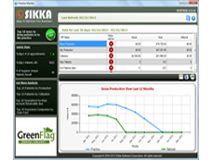Why and How Business Intelligence and Data Analytics Will Benefit Your Dental Practice

With the emergence of business intelligence along with ever-changing market conditions, is it enough to have a strong patient-focus to survive in the increasingly competitive dental industry?
In a recent study by the American Dental Association (ADA), the financial state of the American dental industry appears bleak. According to the study conducted by ADA’s Health Policy Resources Center, the average annual net income for general practitioners has dropped more than 12% since 2006.
The considerable decline in net income, which started several years before the financial crisis in 2008, is highly attributed to the declining utilization of dental care by the adult population. As a consequence, nearly 40% of all dentists in a national survey from 2011 reported they are “not busy enough.” The declining utilization of dental care, coupled with the austere economic climate, forces dentists to find new ways to improve the financial and clinical performance of their practices.
In an effort to become more cost-efficient, attract new patients, and identify new business opportunities, more and more dentists are implementing Business Intelligence and Data Analytics software solutions in their practices.
These tactics have proven to be highly successful in many cases. This data revolution will lead to a greater focus on real-time monitoring of Key Performance Indicators (KPIs), business analytics, and national benchmarking.
Business intelligence and data analytics in the dental industry
Business intelligence and data analytics solutions, which are used in a multitude of industries, analyze the company’s internal data using tools and techniques such as reporting, performance monitoring, data mining, and benchmarking in an effort to improve decision-making, increase utilization, and identify new business opportunities.
In recent years, the American healthcare industry is increasingly turning to business intelligence and data analytics. As a result, medical organizations have been able to improve clinical quality and effectiveness, reduce healthcare costs, and make more well-informed decisions. Currently, we are observing the same trend in the dental industry as dentists have been able to achieve sustainable financial and clinical improvement by implementing software solutions that extract and analyze data from the clinic’s practice management system (PMS).
The business intelligence and data analytics solutions, which utilizes data from the PMS to provide valuable insights and advice about the clinic’s performance, encompasses tools and techniques such as business analytics, reporting, dashboards, and national benchmarking. For example, these solutions allow the dentist to monitor (in real time) hundreds of different KPIs such as Accounts Receivable, Gross Production, Number of New Patients by Referral Source, and Gross Production per Visit.
Additionanlly, the solutions provide valuable financial, clinical, and administrative reports such as profit and loss statements, return on investment, trend analysis, recommendations, and procedure analysis.
Lastly, dentists are able to do real-time clinical and financial benchmarking with practitioners in other specialties or geographical regions, which could help the clinic to identify areas of improvement.
These business intelligence solutions are also able to greatly improve a clinic’s collections by focusing on areas such as fee optimization, reactivating inactive patients, and minimizing no-shows. For example, these solutions use vital inputs from the clinic such as procedure revenue, frequency, and time units along with external data such as census demographics and cost of living to optimize the fee schedule.
Analytics improve business performance and clinical effectiveness
In an effort to gain a competitive advantage in today’s dental industry, which is characterized by declining utilization of dental care and a dismal economic climate, dentists are increasingly implementing business intelligence and data analytics solutions. These solutions enhance the clinic’s financial performance and allow dentists to gain control over profit margins, overhead, and performance.
For example, research indicates that business intelligence and data analytics solutions can increase a clinic’s revenue by more than $50,000. In addition to improving the financial performance, business intelligence solutions can also help the clinical performance by allowing the dentist to spend less time on administrative duties and more time treating patients.